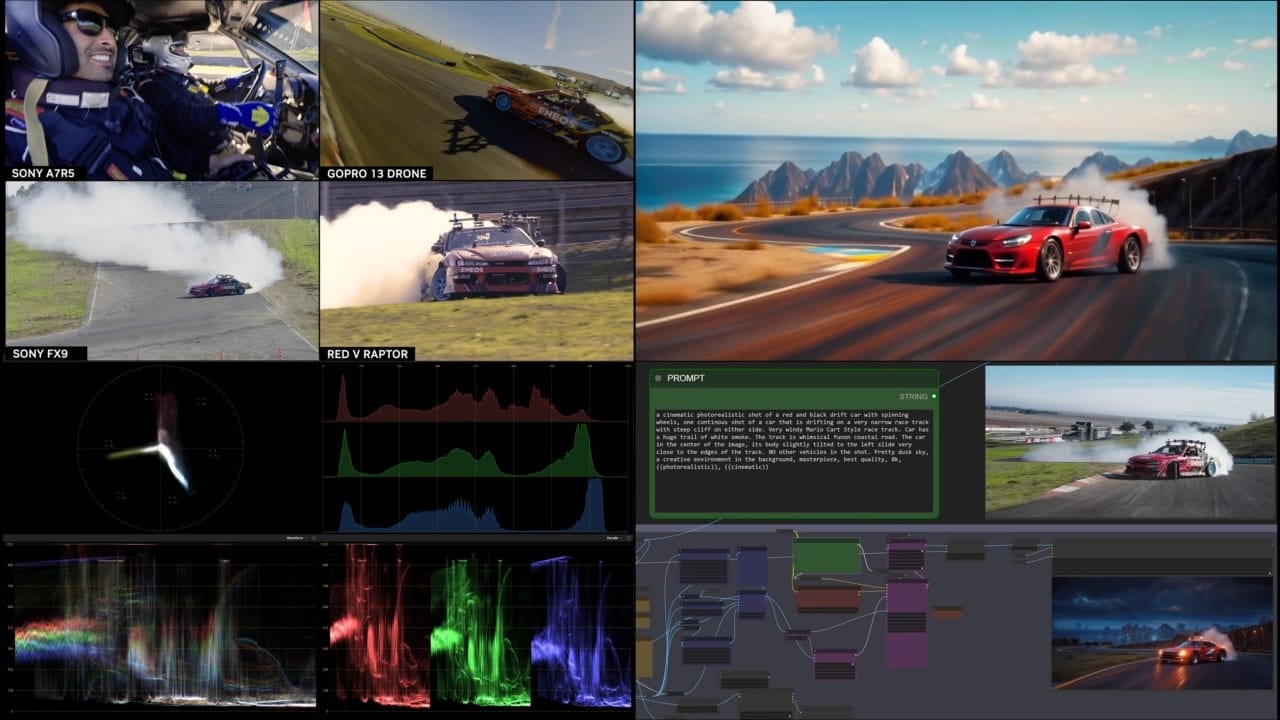Here’s the translation to American English:
Real-time artificial intelligence is transforming the entertainment industry, and NVIDIA has taken a decisive step in this evolution with the launch of its NVIDIA RTX PRO Blackwell GPUs. The presentation took place during NVIDIA’s global AI conference, GTC, where the company showcased how these new graphics cards enable AI and accelerated computing to be integrated into production workflows with unprecedented speed and efficiency.
The RTX PRO Blackwell series is the cornerstone of NVIDIA Media2, an initiative that combines NVIDIA NIM microservices, accelerated computing platforms, and generative AI software to transform content creation, streaming, and live media.
Intelligent Content Creation
The new GPUs feature streaming processors that are up to 1.5 times faster than the previous generation (NVIDIA Ada), along with new neural shaders that integrate AI directly into graphic processes. The fourth-generation RT cores double the performance for creating photorealistic scenes, while the fifth-generation Tensor cores reach up to 4,000 trillion AI operations per second, adding support for FP4 precision. Furthermore, the GDDR7 memory of up to 96 GB allows for handling large-scale 3D projects, virtual reality environments, and complex simulation tasks.
Steve May, CTO of Pixar Animation Studios, emphasized the direct impact on film production:
“With the new RenderMan XPU renderer optimized for the Blackwell platform, 99% of Pixar’s sequences now fit within the 96 GB of memory of the RTX PRO 6000 Blackwell GPUs. This completely changes the way we make films.”
At Lucasfilm, engineer Stephen Hill also noted a significant leap in their StageCraft production environments, where they now achieve up to 2.5 times more performance and double the graphics memory for real-time rendering in 6K and 8K.
Real-Time Streaming and Data Analytics
NVIDIA is focusing on data intelligence with tools that allow for transforming large volumes of information into actionable insights instantly. Libraries like NVIDIA cuML and cuDF accelerate the training of recommendation models and the management of data streams, adjusting content distribution based on user behavior and reducing latency times.
Industry professionals can also benefit from the RTX Kit, which includes neural rendering technologies such as texture compression, neural shaders, and advanced geometry, enhancing graphic quality in games, virtual production, and immersive environments.
Live Production and Content Broadcasting
The ninth generation of NVIDIA NVENC encoders adds support for 4:2:2 encoding, improving video compression quality and speed for broadcasting applications. This is complemented by sixth-generation NVDEC decoders and fifth-generation PCIe connectivity, which doubles bandwidth compared to the previous generation, enhancing data-intensive tasks.
For immersive experiences, companies like Cosm are using the RTX PRO 6000 Blackwell GPUs in their 12K resolution LED displays, seamlessly blending the physical and digital worlds in shows and sporting events with an unprecedented visual smoothness.
Accessible Innovation for Developers
In addition to cutting-edge hardware, NVIDIA announced NIM, pre-optimized AI microservices that allow developers to integrate intelligent assistants and creative tools more easily into their applications. Additionally, AI Blueprints are reference workflows that help create advanced solutions, such as generating podcasts from documents or creating 4K images driven by 3D environments.
Creative professionals can also benefit from ChatRTX, an application that allows for creating personalized chatbots that process local data on machines with RTX GPUs, ensuring speed and privacy.
A New Era for the Entertainment Industry
With the RTX PRO Blackwell series, NVIDIA positions artificial intelligence and accelerated computing as key pillars in content creation, audiovisual production, and user experience personalization.
The audiovisual sector, from major studios to independent developers, is gearing up for a new era where AI not only complements but enhances creativity and innovation to levels never seen before.
Source: Nvidia

